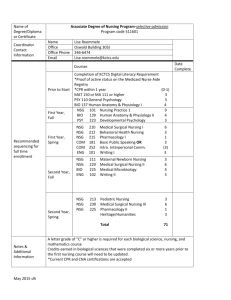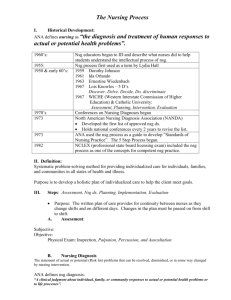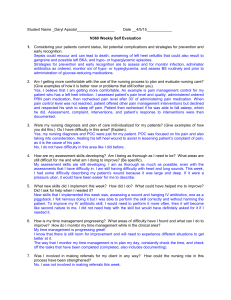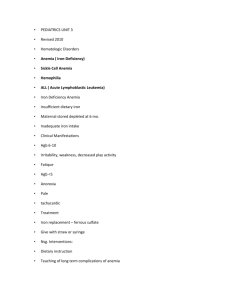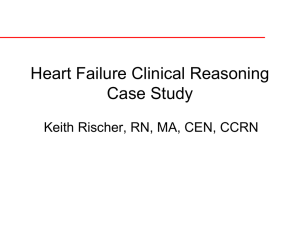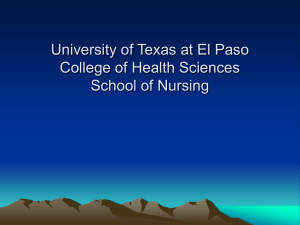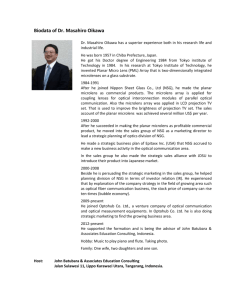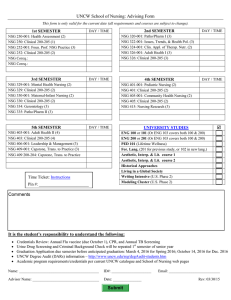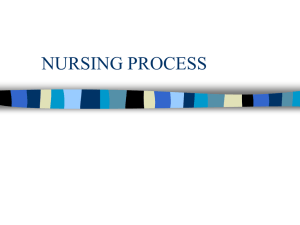Student Name
advertisement
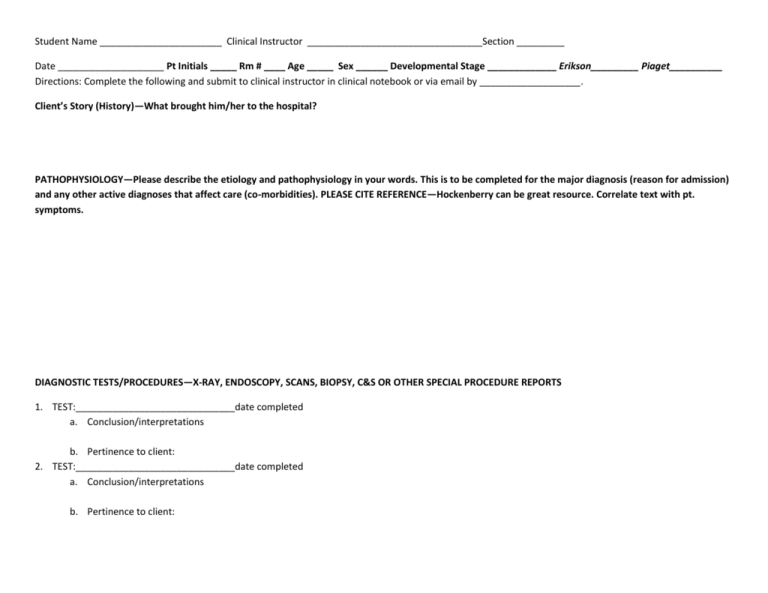
Student Name _______________________ Clinical Instructor _________________________________Section _________ Date ____________________ Pt Initials _____ Rm # ____ Age _____ Sex ______ Developmental Stage _____________ Erikson_________ Piaget__________ Directions: Complete the following and submit to clinical instructor in clinical notebook or via email by ___________________. Client’s Story (History)—What brought him/her to the hospital? PATHOPHYSIOLOGY—Please describe the etiology and pathophysiology in your words. This is to be completed for the major diagnosis (reason for admission) and any other active diagnoses that affect care (co-morbidities). PLEASE CITE REFERENCE—Hockenberry can be great resource. Correlate text with pt. symptoms. DIAGNOSTIC TESTS/PROCEDURES—X-RAY, ENDOSCOPY, SCANS, BIOPSY, C&S OR OTHER SPECIAL PROCEDURE REPORTS 1. TEST:______________________________date completed a. Conclusion/interpretations b. Pertinence to client: 2. TEST:______________________________date completed a. Conclusion/interpretations b. Pertinence to client: LAB RESULTS: Include test, date, results, pertinence to client, interpretation; would you call the MD? Hematology (CBC) Chemistry (BMP of CMP) Urinalysis Cultures MEDICATIONS Med 1 Med 2 Med 3 Med 4 Brand: Generic: Classification: Action of medication: Brand: Generic: Classification: Action of medication: Brand: Generic: Classification: Action of medication: Brand: Generic: Classification: Action of medication: Dose ordered/route/frequency Dose ordered/route/frequency Dose ordered/route/frequency Dose ordered/route/frequency Calculation of therapeutic dose by wt: Calculation of therapeutic dose by wt: Calculation of therapeutic dose by wt: Calculation of therapeutic dose by wt: Why ordered for this pt: Why ordered for this pt: Why ordered for this pt: Why ordered for this pt: Adverse effects—list significant ones Nursing Implications: Adverse effects—list significant ones Adverse effects—list significant ones Adverse effects—list significant ones Safety—Ct identification: risk for falls, vital sign assessment RUBRIC FOR OUTCOME CONCEPT MAP CONCEPT MAP COMPONENTS WITH CRITERIA FOR GRADING 1. 2. 3. 4. 5. Based on the child’s medical diagnosis, identify 3 Nursing Dx’s—stated in PES format, and 3 priority outcomes including bio-psycho-social-developmental needs of the child. 2points for each correctly state Nsg Dx and 1 point for each outcome Identify at least 4 measurable assessments and assessment findings for each Nsg Dx and Outcome. Write them under the appropriate outcome on the Concept Map. 2 points for each assessment and assessment finding, 8 points per outcome X 3 outcomes= 24 Identify at least 4 priority nursing interventions that will help achieve each outcome. Write them beside the assessment findings under the nursing outcome concept map. Note: Must include at least 2 action interventions (ie. Cough and deep breathe q 2h) and 2 priority assessment for monitoring the client’s response (ie. Monitor VS q4h & compare to previous findings.) 1 point per intervention per outcome if appropriate & meet criteria. Use lines to show the relationships between the outcomes. Different colored pencils for each outcome to draw the lines can make the relationships clearer. Points based on relationship being valid. On second page of Concept Map clearly evaluate the client’s response to each of the interventions and progress toward meeting outcomes. 1 point for each of the evaluation responses for the intervention. 4 points/outcome X3=12 TOTAL POINTS POSSIBLE POINTS EARNED/ POINTS POSSIBLE ________/9 ________/24 ________/12 ________/6 ________/12 100 CONCEPT MAP COMPONENTS WITH CRITERIA FOR GRADING 6. State if outcomes were met and make a judgment about each outcome based on your evaluation. (ie. Continue, modify, discontinue) and why. 2 points for each outcome judgment X3=6 7. Interpreted correctly 3 priority lab values related to the pt’s current clinical conditions with the nursing indications. 2 points per each correctly interpreted lab value and nursing indications X3=6 8.Describe 3 medications and identify nursing indications and expected client response for each of the 3 medications, including med calculation. 2 points for each medication, 2 X 3=6 9. Critical Thinking/understanding of Pathophysiology is reflected in the correlation of patient’s symptoms with researched etiology and pathophysiology. 12 possible points. 10. List of references used in APA style. General appearance of Concept Map and ease of understanding. 4 points for reference page, 3 points for general appearance. TOTAL POINTS RECEIVED POINTS EARNED/ POINTS POSSIBLE _________/6 _________/6 _________/6 _________/12 _________/7 CONCEPT MAP GUIDELINES Step 2: Generate the possible client problems/Nsg Dxs that might be associated with the medical diagnosis. Be sure to include developmental and teaching needs as well. Develop a pt-centered outcome for each Nsg Diagnosis. Nsg Dx #1 Desired Outcome System Specific Assessment 1. 2. 3. 4. Evaluation Criteriawhat do you want/ expect to see? 1. 2. 3. 4. Step 4: Add clinical assessment findings to the CM. Refer to ‘defining S/Sx’ in NCP book to know what to look for in pt with each Nsg Dx. Step 5: Determine outcomes and Evaluation Criteria (how to measure goal achievement) Interventions 1. Step 1: Place the medical dx/client situation in the middle of the paper with any pertinent client hx that would impact this admission. 2. 3. Med DX: Hx: 4. Step 6: Select the best interventions to achieve the outcomes. Italicize those interventions of highest priority. Nsg Diagnosis #3 Desired Outcome Nsg Dx #2 Desired Outcome Step 3: Determine the relationships among the ct problems/Nsg Dx. Think to yourself, “is there any logical reason why these 2 problems might be related to each other?” If the answer is yes, draw a line to connect those problems. Step 7: Evaluate each intervention implemented as to whether it was effective or not in achieving the Evaluative Criteria. Step 8: Determine if outcomes have been achieved. There are 3 clinical judgments possible: Outcome achieved—problem no longer exists? Or need to sustain plan of care? Outcome partially met—is > time needed, change in plan? Outcome not met—why? what needs to change? New interventions needed? Nsg Dx #4 Desired outcome
